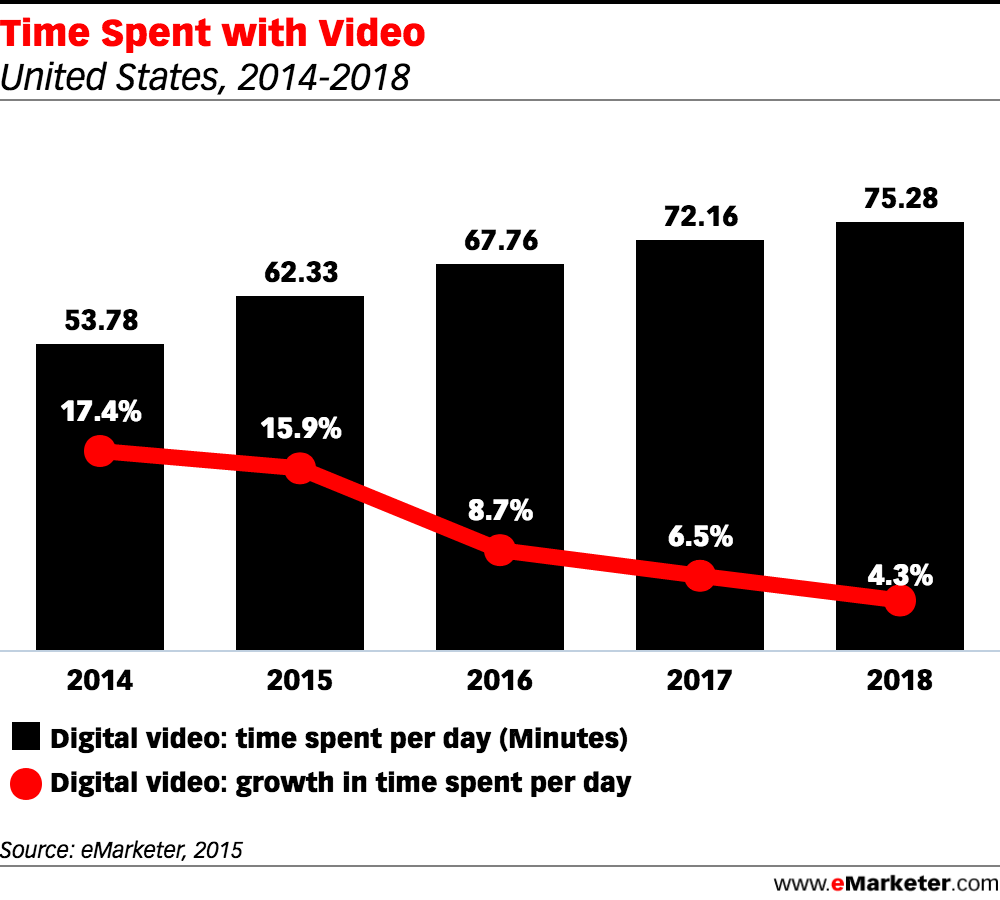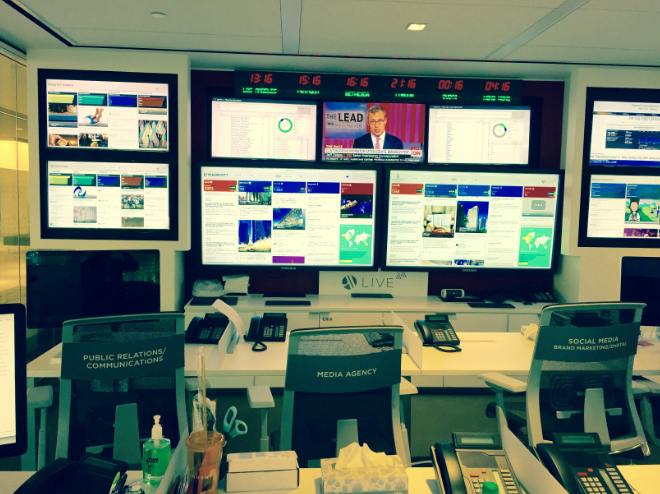Brands
How Content Marketing Teams Are Evolving in 2016
Late last year, Cisco laid off over 100 marketing staffers.
“Now we’re restructuring and hiring two hundred content marketing people globally,” said Katrina Neal, the head of content marketing for Cisco’s service provider segment. The move signifies not only a change in marketing tactics, but also an effort to refocus the company around storytelling.
Cisco isn’t the only one to make this move. In recent years, brands have increasingly used content to empower departments across the organization. General Mills created its own blog when traditional outlets were slow to pick up PR coverage. Shoe retailer Zappos launched a YouTube series, #ZapposCulture, to boost internal company morale. Basecamp, a web-based project management tool, published a collection of articles on Medium, titled Signal v. Noise, to attract top developers and sell software.
Content has rapidly become an integral part of the brand experience across every department and every industry. What follows is a look at how brands are shaping their teams to maximize their resources and drive ROI.
Multimedia newsrooms
If there’s one top trend in media today, it’s video. Time spent with digital video continues to rise, with over 224 million Americans expected to watch an average of 75 minutes of video a day by 2018, according to eMarketer.

In June 2016, Facebook’s vice president for Europe, Nicola Mendelsohn, even predicted that Facebook would be “all video” in five years.
As a result, brands are realizing they need to move from content marketing 1.0 (the blog post) to content marketing 2.0 (multimedia)—and staff accordingly.
JPMorgan Chase was an early adopter of the multimedia newsroom model. Chase’s homepage hosts stories that range from an in-depth profile of LeBron James’s mentorship program to an expose on the differences between sparkling wine and champagne. In a multi-part project, “Revitalizing Brownsville,” Chase examined topics from the justice system to local entrepreneurship in Brownsville, Brooklyn. In both cases, documentary-style videos accompany longform essays. But they didn’t pop up overnight. Chase took its time constructing a newsroom, building a foundation of content governance and cross-department communication.
“We had to set up our infrastructure and then show the organization how it could work,” Brian Becker, Chase’s executive newsroom director, explained in a Contently interview. “We needed to prove that content could improve marketing’s effectiveness.”
American Express is another company that focuses on longform and multimedia coverage, looking at small business achievements on its blog, OPEN Forum. “The Journey,” for example, chronicled 90 days in the life of a small beverage company called Buchi Kombucha.
Similarly, Capital One launched the Spark Business IQ digital magazine to share articles, white papers, and other small-business resources and stories, including “The Resilience Series,” which celebrates entrepreneurs. And financial institutions aren’t alone.
Marriott Hotels is well known for its commitment to audience-first content. Dubbed “M Live,” Marriott’s content control room is run by a team of media veterans—two from Disney and one from CBS—who monitor nine screens that track the brand’s social media campaigns, international bookings, and editorial calendar. From the newsroom, Marriott has created a successful TV show, The Navigator Live; award-winning short films, such as Two Bellmen; and an online magazine. It’s even dabbled in virtual reality.
“We hired a lot of media, took a lot of people who were previously storytellers, turned them into marketers,” said David Beebe, Marriott’s vice president of global creative. “It’s all the same thing today. You can’t argue with the fact that people aren’t engaging with traditional [advertising], and this is the way to do it. You have to try it.”
While the B2C world might seem like a more natural fit for a multimedia newsroom, B2B brands are also following suit. Take athenahealth, an electronic health records (EHR) software company. Its newsroom has two arms: a digital magazine and a video studio. The magazine is run by seasoned journalists, and the video studio is staffed by former public television producers who create a steady stream of content from the company’s daylight film studio.
“You know how they do the morning programs with the window [in the backdrop]?” Jacqueline Mow, the director of video production at athenahealth, said in a recent interview with Contently. “Our thought was to create a daylight studio like that.”
Athenahealth’s studio has thus far produced everything from internal communications videos—like a “Gangnam Style” dance video with CEO Jonathan Bush—to three-second animations and competitor mockumentaries. It’s also worked with outside agencies to create popular social campaigns, like the (real) doctor ZDoggMD’s rendition of Jay Z and Alicia Keys’s “Empire State of Mind,” which ran as part of athenahealth’s #LetDoctorsBeDoctors initiative.
Modeling after sites like FiveThirtyEight and Vox, John Fox, athenahealth’s executive director of content, is set on producing news-oriented health care stories at scale. As with Marriott, the publication’s goal is to enhance brand awareness and authority.
“We are always trying to explain the network,” Fox said. “What better way to explain athenahealth than to make the power of the network visible—to manifest stories through data and what we spring from it?”
Freelance teams
As content marketing grows in popularity, many brands are supplementing their in-house team with freelance creative talent.
Coca-Cola’s online magazine, Coca-Cola Journey, has amassed an audience of millions of readers each month and launched sites in 19 global markets. Editor-in-chief Jay Moye and his small editorial team regularly tap sports, food, and business reporters in Contently’s network to scale their storytelling operation. “We’ve really tried to carve out a beat system with our [freelance] writers,” said Moye. “It’s nice to know who we can go to for certain stories.”
Tapping a network of seasoned professionals allows companies to cover a wider range of topics in greater depth for a fraction of the cost of hiring full-time employees. It’s becoming an increasingly popular way to expand the capabilities of in-house content marketing teams.
AARP’s Media Sales department used a freelance videographer to document a coastal trip down the Pacific Coast Highway as part of a native advertising project with its car rental partner, Avis. Athenahealth sources political and biomedical writers to cover shifts in health policy and medical advancements for its digital magazine, athenaInsight. The Trade Desk, an ad-tech firm, has developed a consistent infographic cadence with a freelance designer from Brazil. And career services startup Better Weekdays used freelancers to publish more than 100 stories on the company’s blog in one year.
“I’m an okay writer, but I don’t have the time, and it’s not the same as people who do this for a living,” said Better Weekdays CEO Chris Motley. “The thing ROI doesn’t account for is time—and that’s the key point.”
(Full disclosure: JPMorgan Chase, Marriott, Capital One, American Express, athenahealth, Coca-Cola, AARP, and Better Weekdays are Contently clients.)
Image by Huan Tran / GettyGet better at your job right now.
Read our monthly newsletter to master content marketing. It’s made for marketers, creators, and everyone in between.







